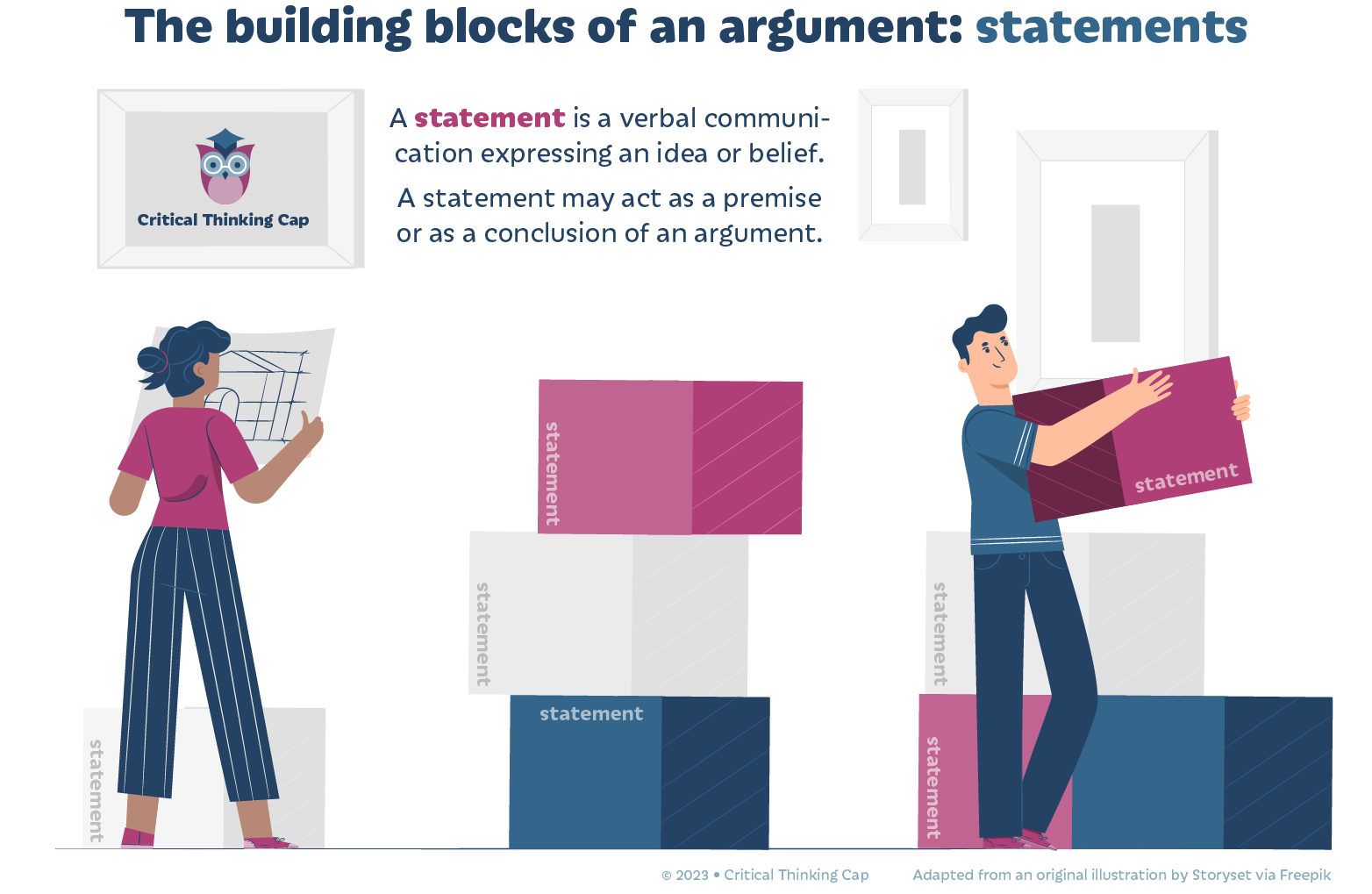Building blocks of arguments

In the last topic we learned that an argument, in the critical-thinking sense, is a statement that comprises a conclusion and at least one premise.
In this topic we formally introduce these three all-important terms.
WATCH: A brief glimpse into the components of an argument and how they can be arranged and identified.
EXPLORE: Below, the building blocks are explained and illustrated.
Statements
A statement is a verbal communication (that is, the communication is put into words) that conveys information or expresses an idea or belief.
Within an argument, a statement can have one of two functions. A statement can act as either the argument’s claim (aka conclusion) or its premise.

Conclusions (or, claims)
A conclusion (or claim) is a statement at the heart of an argument, that is, it is the main point that the argument is built to assert. There should only be one claim per argument.

Premises
A premise (plural: “premises”) is a statement proffered to support the argument’s claim. Every argument should have at least one premise.
Perhaps the more complex the claim, the more premises that may be required to support it.
Also, be careful with complex premises! They may have to be broken down into two or more premises.

A complete illustration of these building blocks can be downloaded from this topic’s Materials tab.
TEST YOURSELF: Check your current understanding of these three building blocks with the quiz below.
“Building Blocks of Arguments” is an illustration demonstrating the three building blocks of an argument.
Building Blocks of Arguments (illustration / infographic)
